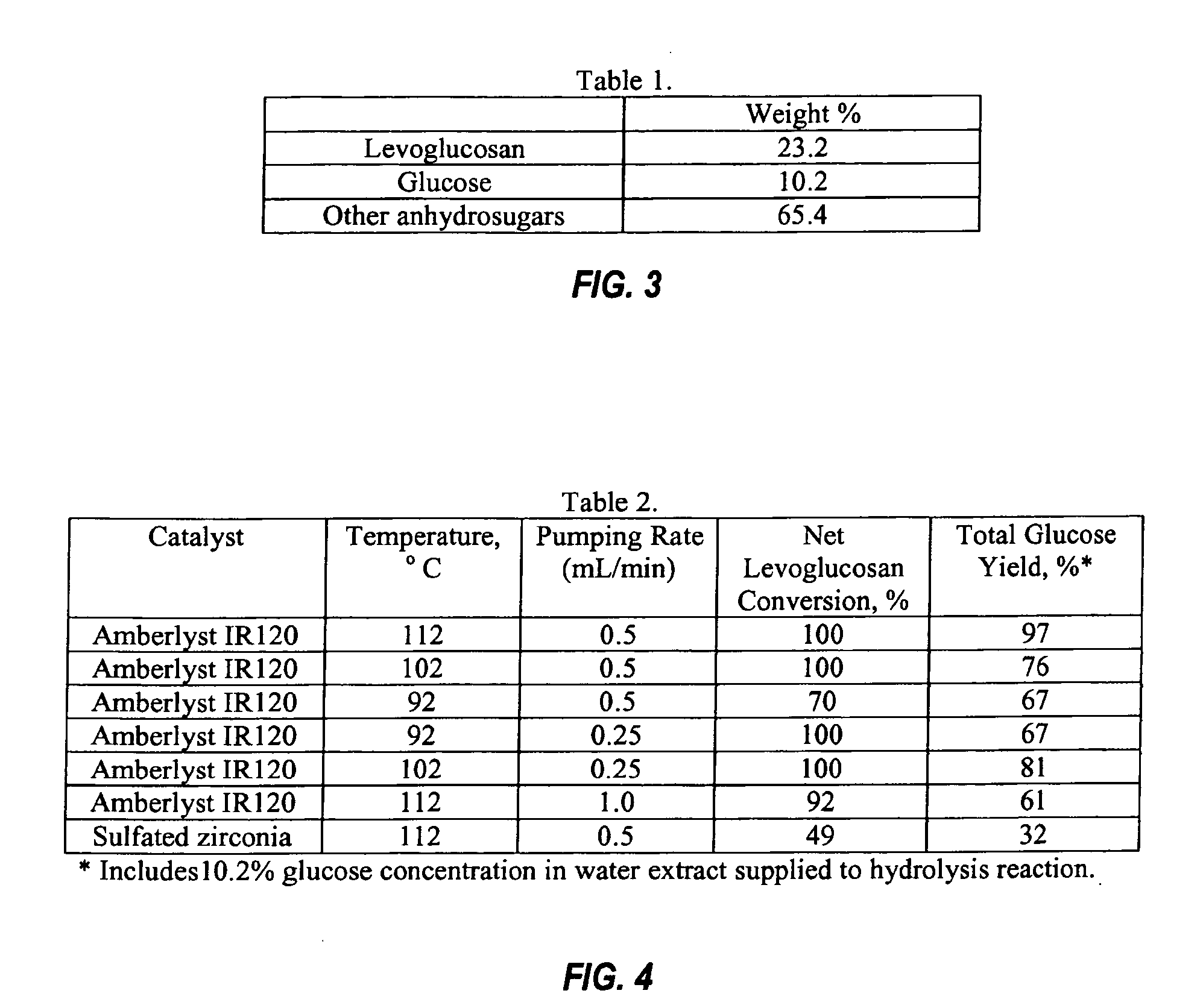Process for converting anhydrosugars to glucose and other fermentable sugars
a technology of anhydrosugar and glucose, which is applied in the direction of glucose production, sugar derivates, biofuels, etc., can solve the problems of difficult extraction, difficult to break down, and difficult to extract, and achieve fast pyrolysis and reduce inhibitor chemicals
- Summary
- Abstract
- Description
- Claims
- Application Information
AI Technical Summary
Benefits of technology
Problems solved by technology
Method used
Image
Examples
Embodiment Construction
[0035] This invention is a method for the production of glucose and other fermentable sugars from a fast-pyrolysis bio-oil fraction or other anhydrosugar-containing feedstock. One example of the invention includes the steps of: [0036] 1) Water extraction of an anhydrosugar-containing feedstock at ambient conditions. [0037] 2) Hydrolysis of the water extract using the following materials, proportions, and reaction conditions as described above.
[0038] Following is an outline of various examples of features of the invention. [0039] A) Examples of materials, proportions, and reaction conditions that have demonstrated desired results [0040] 1) RTP™-generated bio-oil as feedstock [0041] Bio-oils generated via pyrolysis of paper, cardboard, straw, stover, grass, pulp, and other lignocellulosic materials [0042] Bio-oils fractionated by distillative method [0043] 2) Initial purification conditions [0044] Water-bio-oil volumetric ratio for water extraction—1:1 to 10:1 [0045] Water extraction...
PUM
| Property | Measurement | Unit |
|---|---|---|
| Temperature | aaaaa | aaaaa |
| Temperature | aaaaa | aaaaa |
| Angle | aaaaa | aaaaa |
Abstract
Description
Claims
Application Information
 Login to View More
Login to View More - R&D
- Intellectual Property
- Life Sciences
- Materials
- Tech Scout
- Unparalleled Data Quality
- Higher Quality Content
- 60% Fewer Hallucinations
Browse by: Latest US Patents, China's latest patents, Technical Efficacy Thesaurus, Application Domain, Technology Topic, Popular Technical Reports.
© 2025 PatSnap. All rights reserved.Legal|Privacy policy|Modern Slavery Act Transparency Statement|Sitemap|About US| Contact US: help@patsnap.com



